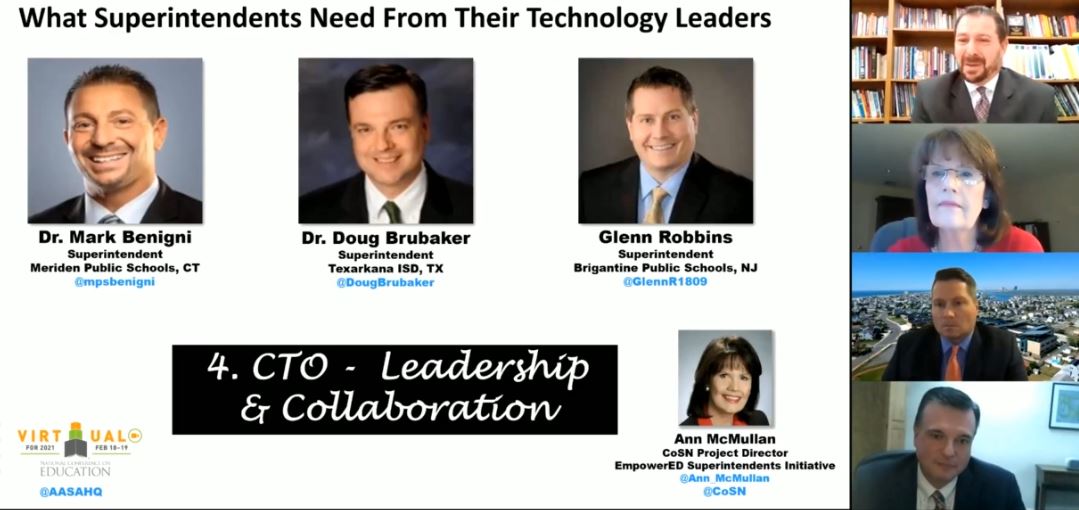By Amanda Paule |
Chief technology officers are crucial to elementary and secondary schools today, and they have become even more crucial during the COVID-19 pandemic and the rapid switch to online learning.
The sudden and sweeping transformation from in-person learning to remote learning in many communities over the past year has also meant an emergence of technology leaders beyond the IT department. These include students, parents, older siblings and grandparents alike. All have had to become their own household’s “chief technology officers” during the remote learning experience.
During an AASA national conference panel “What Superintendents Need From Their Technology Leaders” on Friday, Feb. 19, three superintendents discussed how school districts can effectively involve all of their technology leaders, from CTOs to students to parents, to produce a strong teaching and learning environment.
Doug Brubaker, a former CTO now working as superintendent of the Texarkana Independent School District in Texarkana, Texas, said the key in managing this new, decentralized technology leadership is “trying to empower everyone, from the classroom all the way to the cabinet level, to make technology decisions and to be able to implement those tools successfully.”
To empower technology users in his district, Mark Benigni, superintendent of Meriden Public Schools in Meriden, Conn., said his district maintains a tech support team for teachers and families, sends video updates home in English and Spanish, and holds specialized training for staff on how to best reach out to families.
“The pandemic has really put a spotlight on three areas: equity and access, engaging and informing stakeholders, and supporting teachers,” Benigni said.
The ability to support students, families, administration and teachers through technology use is a main attribute Benigni said he looks for in a CTO and IT support staff.
“If our teachers are comfortable, that translates to our students as well,” he said.
Meriden gives the CTO a seat at the table and a voice in cabinet-level decision-making, which Benigni believes enables the CTO to gain the knowledge and respect needed to best interact with both faculty and families.
Glenn Robbins, superintendent of Brigantine Public Schools in Brigantine, N.J., agreed that the ability to collaborate with administrators and faculty is a primary responsibility of a CTO. Robbins stressed the importance of hiring a CTO proficient in online security and who has a “10-year plan” or “a vision not only of what the district can be, but what the district could be in years to come.”
For more information on improving educational technology, panelists recommended the Empowered Superintendent Toolkit, a product of the Consortium for School Networking, which includes case studies and testimonials as well as CTO recruitment resources and Certified Education Technology Leader exam access. School district leaders can also attend monthly Super-Connected webinars moderated by Ann McMullan, project director of the CoSN EmpowerED Superintendent Initiative.
(Amanda Paule is a junior magazine, news and digital journalism major at Syracuse University’s Newhouse School of Public Communications and an intern with AASA’s Conference Daily Online.)

